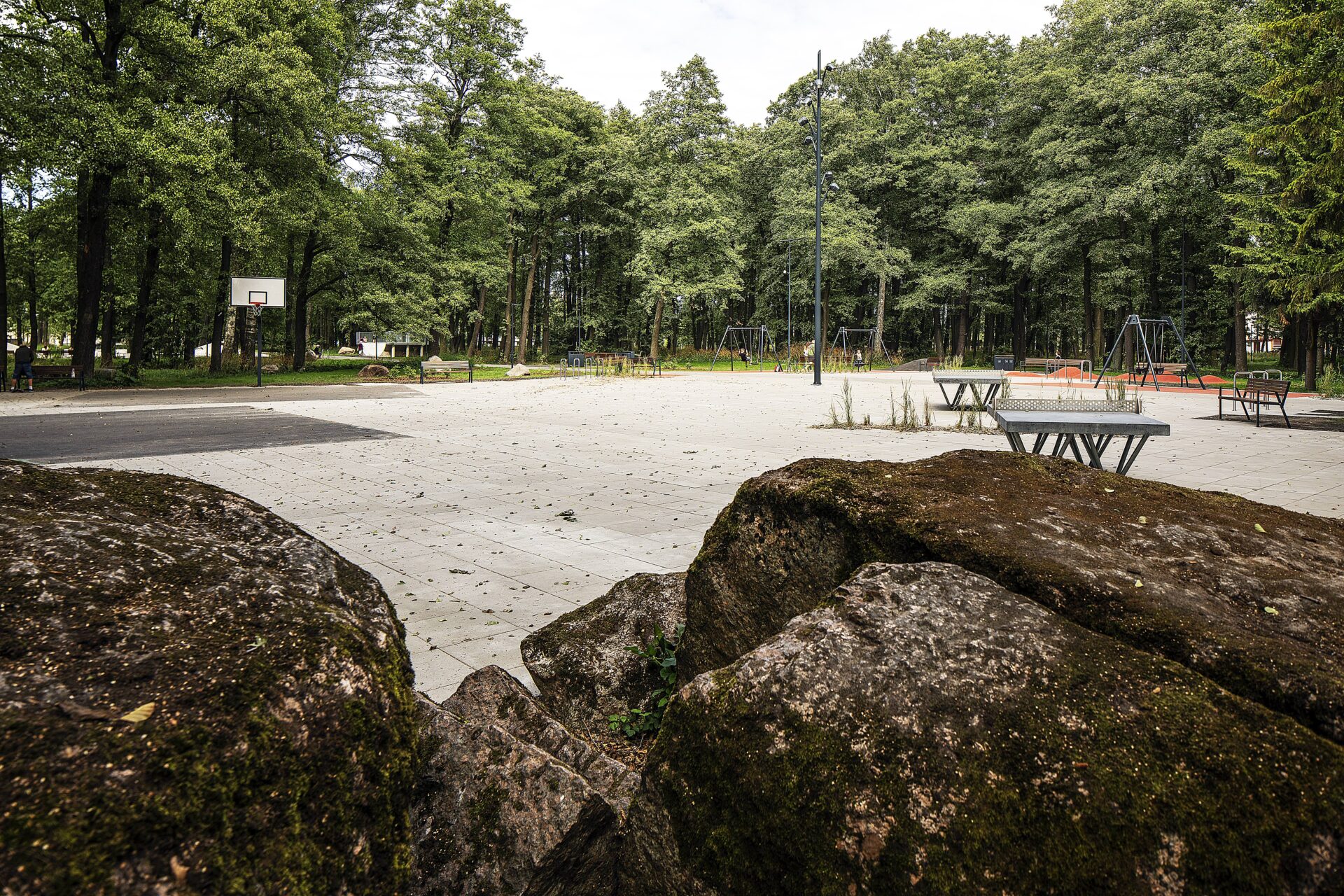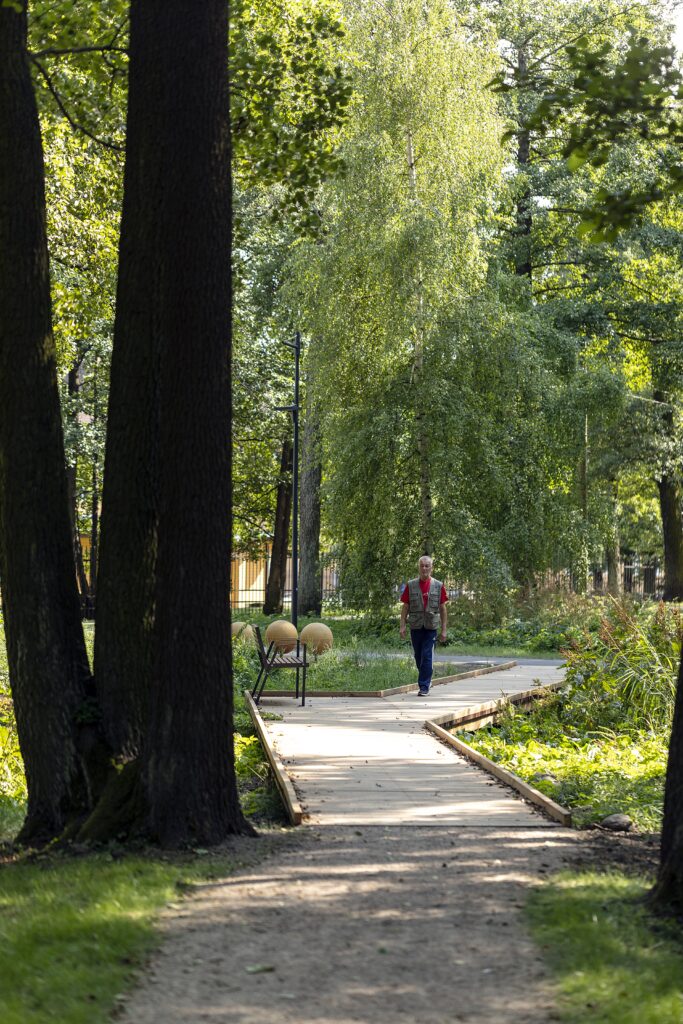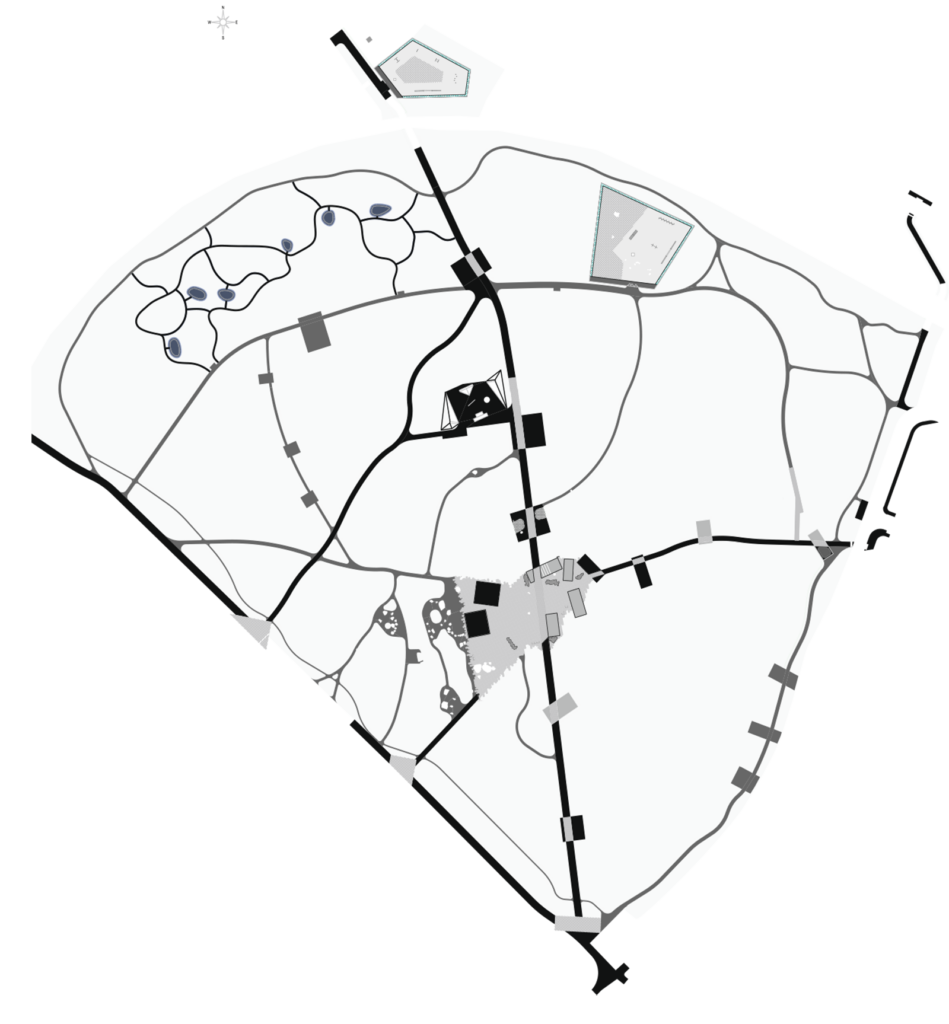Põhja-Tallinn can be rightly called a green city district with Kopli Birch Park under nature conservation as its latest gem. In addition to maintaining natural heritage and exhibiting the boulder field, we also aimed at creating various leisure opportunities. There is an interesting concept of various play areas for children including artificial waterbodies, logs for climbing and other features in keeping with the natural characteristics of the park. An important role is also played by the selection of materials fitting well into the surroundings. The ease of maintenance is always important in public spaces which means that the convenient maintenance must conform to the visual solutions.
The discussions about the name of the park led to the selection of Kopli Birch Park as it fits well with the name of Kopli Cemetery Park located in the same district.
Manuela Pihlap, Head of the City District Põhja-Tallinn
Kopli Birch Park joins the gentrified residential area in Kopli Liinid, the seaside area and beach with the cultural hub located in the former rubber factory Põhjala.
Kopli Peninsula used to be covered by forest, the first fishing village was established in the early 20th century followed by larger buildings, the school and kindergarten, the factory and residential areas. In the course of the process, the forests were gradually felled until only a wild oasis with old trees spanning over an area of 7.2 hectares – now called Kopli Birch Park – remained. Most probably there were also fens. In 1980s, the wetland was drained, with the drainage ditches regulating the water regime in the park to this day. Further character is given by a boulder field under nature conservation and a boulder called the Kopli Park Rock.
The most important aspect of the new landscape architectural solution was to retain and feature the natural look and the boulder field as much as possible.
Particular attention was paid to providing activities in fresh air for various people. You can do sports, play games, walk your dog and simply enjoy nature but at the same time also withdraw from the crowd, meditate with the boulders or merely relax in green solitude.
In order to retain the current environment as much as possible, the activities have been scattered in the small pockets around the park. It is important to keep the activities abstract and open-ended so that the users and players could decide for themselves how to make use of the features. For instance, there are puddles with stepping stones, hillocks and hollows for collecting rainwater, tubes and piles of rocks as well as sticks and blocks of wood for crawling and climbing. But at the same time also more traditional elements such as a skatepark, swings and ping pong tables.
Also design by maintenance is practised here, for instance, with tracks scythed in tall grass leading to the boulder field. Smaller mowed areas and picnic places between taller plants create quiet nooks for withdrawal. The landscaping was complemented with sweet mock orange, common snowberry and fly honeysuckle providing habitat and shelter for smaller birds.
Merle Karro-Kalberg

















































































































































































































